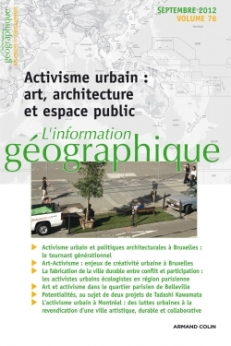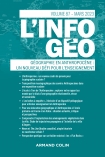
L'information géographique - Vol. 76 (3/2012)
Pour acheter ce numéro, contactez-nous
Recevez les numéros de l'année en cours et accédez à l'intégralité des articles en ligne.
Dans les années 1960 et 1970, la « bruxellisation », processus de destruction de quartiers populaires et du patrimoine architectural par les autorités publiques, a engendré les premières luttes urbaines à Bruxelles. Une première génération d’activistes urbains a émergé à cette occasion et a suscité la création de nombreux comités d’habitants. Ces associations ont obtenu que les paradigmes de la rénovation urbaine et de la protection du patrimoine guident les politiques publiques. Au début des années 2000 surgit une nouvelle génération d’activistes, plus directement liée au milieu de l’architecture. Ils dénoncent le manque d’ambition architecturale À travers différents terrains d’expérimentations, ils vont défendre de nouvelles pratiques architecturales et urbanistiques. Coexistent désormais, au sein des politiques publiques, des dispositifs issus de référents différents et se pose la question de leur articulation.
In the 1960s and 1970s, the « Brusselisation », destruction process of architectural heritage and popular areas by public authorities, led to the first urban struggles in Brussels. On this occasion, a first generation of urban activists has emerged, and led to the creation of a lot of household committees. These associations were granted that the paradigms of urban renewal and protection of heritage guide public policy. In the early 2000s, a new generation of activists arises, more directly in link with architecture environment. They want to promote modern architecture and towers, stigmatized in Brussels, denounce the lack of architectural ambition. Through various experimentations, they are going to defend with public authorities new architectural and urban practices. Now coexist, in public politics, devices coming from different referents, and the critical point is the question of their articulation.

